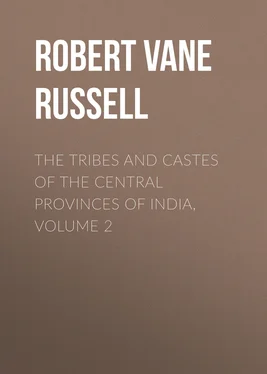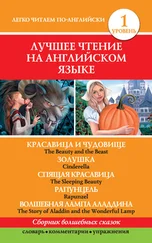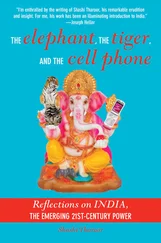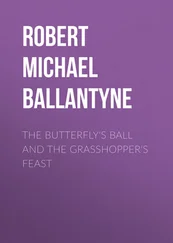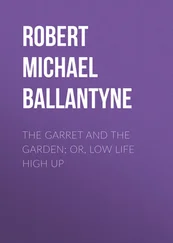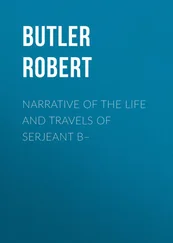Robert Vane Russell - The Tribes and Castes of the Central Provinces of India, Volume 2
Здесь есть возможность читать онлайн «Robert Vane Russell - The Tribes and Castes of the Central Provinces of India, Volume 2» — ознакомительный отрывок электронной книги совершенно бесплатно, а после прочтения отрывка купить полную версию. В некоторых случаях можно слушать аудио, скачать через торрент в формате fb2 и присутствует краткое содержание. Жанр: foreign_prose, История, foreign_edu, foreign_antique, на английском языке. Описание произведения, (предисловие) а так же отзывы посетителей доступны на портале библиотеки ЛибКат.
- Название:The Tribes and Castes of the Central Provinces of India, Volume 2
- Автор:
- Жанр:
- Год:неизвестен
- ISBN:нет данных
- Рейтинг книги:4 / 5. Голосов: 1
-
Избранное:Добавить в избранное
- Отзывы:
-
Ваша оценка:
- 80
- 1
- 2
- 3
- 4
- 5
The Tribes and Castes of the Central Provinces of India, Volume 2: краткое содержание, описание и аннотация
Предлагаем к чтению аннотацию, описание, краткое содержание или предисловие (зависит от того, что написал сам автор книги «The Tribes and Castes of the Central Provinces of India, Volume 2»). Если вы не нашли необходимую информацию о книге — напишите в комментариях, мы постараемся отыскать её.
The Tribes and Castes of the Central Provinces of India, Volume 2 — читать онлайн ознакомительный отрывок
Ниже представлен текст книги, разбитый по страницам. Система сохранения места последней прочитанной страницы, позволяет с удобством читать онлайн бесплатно книгу «The Tribes and Castes of the Central Provinces of India, Volume 2», без необходимости каждый раз заново искать на чём Вы остановились. Поставьте закладку, и сможете в любой момент перейти на страницу, на которой закончили чтение.
Интервал:
Закладка:
R. V. Russell
The Tribes and Castes of the Central Provinces of India, Volume 2
Pronunciation
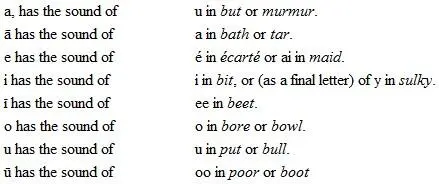
The plural of caste names and a few common Hindustāni words is formed by adding s in the English manner according to ordinary usage, though this is not, of course, the Hindustāni plural.
Note.—The rupee contains 16 annas, and an anna is of the same value as a penny. A pice is a quarter of an anna, or a farthing. Rs. 1–8 signifies one rupee and eight annas. A lakh is a hundred thousand, and a krore ten million.
Part II
Articles on Castes and Tribes
Agaria—Fakīr
Agaria
1. Origin and subdivisions.
Agaria. 1 1 This article is compiled from papers by Mr. Mīr Pādshāh, Tahsīldār of Bilāspur, and Kanhya Lāl, clerk in the Gazetteer office.
—A small Dravidian caste, who are an offshoot of the Gond tribe. The Agarias have adopted the profession of iron-smelting and form a separate caste. They numbered 9500 persons in 1911 and live on the Maikal range in the Mandla, Raipur and Bilāspur Districts.
The name probably signifies a worker with āg or fire. An Agaria subcaste of Lohārs also exists, many of whom are quite probably Gonds, but they are not included in the regular caste. Similar Dravidian castes of Agarias are to be found in Mīrzāpur and Bengal. The Agarias are quite distinct from the Agharia cultivating caste of the Uriya country. The Raipur Agarias still intermarry with the Rāwanbansi Gonds of the District. The Agarias think that their caste has existed from the beginning of the world, and that the first Agaria made the ploughshare with which the first bullocks furrowed the primeval soil. The caste has two endogamous divisions, the Patharia and the Khuntia Agarias. The Patharias place a stone on the mouth of the bellows to fix them in the ground for smelting, while the Khuntias use a peg. The two subcastes do not even take water from one another.
Their exogamous sections have generally the same names as those of the Gonds, as Sonwāni, Dhurua, Tekām, Markām, Uika, Purtai, Marai, and others. A few names of Hindi origin are also found, as Ahindwār, Ranchirai and Rāthoria, which show that some Hindus have probably been amalgamated with the caste. Ahindwār or Aindwār and Ranchirai mean a fish and a bird respectively in Hindi, while Rāthoria is a gotra both of Rājpūts and Telis. The Gond names are probably also those of animals, plants or other objects, but their meaning has now generally been forgotten. Tekām or teka is a teak tree. Sonwāni is a sept found among several of the Dravidian tribes, and the lower Hindu castes. A person of the Sonwāni sept is always chosen to perform the ceremony of purification and readmission into caste of persons temporarily excommunicated. His duty often consists in pouring on such a person a little water in which gold has been placed to make it holy, and hence the name is considered to mean Sonāpāni or gold-water. The Agarias do not know the meanings of their section names and therefore have no totemistic observances. But they consider that all persons belonging to one gotra are descended from a common ancestor, and marriage within the gotra is therefore prohibited. As among the Gonds, first cousins are allowed to marry.
2. Marriage.
Marriage is usually adult. When the father of a boy wishes to arrange a marriage he sends emissaries to the father of the girl. They open the proceedings by saying, ‘So-and-so has come to partake of your stale food.’ 2 2 Bāsi or rice boiled in water the previous day.
If the father of the girl approves he gives his consent by saying, ‘He has come on foot, I receive him on my head.’ The boy’s father then repairs to the girl’s house, where he is respectfully received and his feet are washed. He is then asked to take a drink of plain water, which is a humble method of offering him a meal. After this, presents for the girl are sent by a party accompanied by tomtom players, and a date is fixed for the marriage, which, contrary to the usual Hindu rule, may take place in the rains. The reason is perhaps because iron-smelting is not carried on during the rains and the Agarias therefore have no work to do. A few days before the wedding the bride-price is paid, which consists of 5 seers each of urad and til and a sum of Rs. 4 to Rs. 12. The marriage is held on any Monday, Tuesday or Friday, no further trouble being taken to select an auspicious day. In order that they may not forget the date fixed, the fathers of the parties each take a piece of thread in which they tie a knot for every day intervening between the date when the marriage day is settled and the day itself, and they then untie one knot for every day. Previous to the marriage all the village gods are propitiated by being anointed with oil by the Baiga or village priest. The first clod of earth for the ovens is also dug by the Baiga, and received in her cloth by the bride’s mother as a mark of respect. The usual procedure is adopted in the marriage. After the bridegroom’s arrival his teeth are cleaned with tooth-sticks, and the bride’s sister tries to push sāj leaves into his mouth, a proceeding which he prevents by holding his fan in front of his face. For doing this the girl is given a small present. A paili 3 3 A measure containing about 2½ lbs. of grain.
measure of rice is filled alternately by the bride and bridegroom twelve times, the other upsetting it each time after it is filled. At the marriage feast, in addition to rice and pulse, mutton curry and cakes of urad pulse fried in oil are provided. Urad is held in great respect, and is always given as a food at ceremonial feasts and to honoured guests. The greater part of the marriage ceremony is performed a second time at the bridegroom’s house. Finally, the decorations of the marriage-shed and the palm-leaf crowns of the bride and bridegroom are thrown into a tank. The bride and bridegroom go into the water, and each in turn hides a jar under water, which the other must find. They then bathe, change their clothes, and go back to the bridegroom’s house, the bride carrying the jar filled with water on her head. The boy is furnished with a bow and arrows and has to shoot at a stuffed deer over the girl’s shoulder. After each shot she gives him a little sugar, and if he does not hit the deer in three shots he must pay 4 annas to the sawāsa or page. After the marriage the bridegroom does not visit his wife for a month in order to ascertain whether she is already pregnant. They then live together. The marriage expenses usually amount to Rs. 15 for the bridegroom’s father and Rs. 40 for the bride’s father. Sometimes the bridegroom serves his father-in-law for his wife, and he is then not required to pay anything for the marriage, the period of service being three years. If the couple anticipate the ceremony, however, they must leave the house, and then are recalled by the bride’s parents, and readmitted into caste on giving a feast, which is in lieu of the marriage ceremony. If they do not comply with the first summons of the parents, the latter finally sever connection with them. Widow marriage is freely permitted, and the widow is expected to marry her late husband’s younger brother, especially if he is a bachelor. If she marries another man with his consent, the new husband gives him a turban and shoulder-cloth. The children by the first husband are made over to his relatives if there are any. Divorce is permitted for adultery or extravagance or ill-treatment by either party. A divorced wife can marry again, but if she absconds with another man without being divorced the latter has to pay Rs. 12 to the husband.
Интервал:
Закладка:
Похожие книги на «The Tribes and Castes of the Central Provinces of India, Volume 2»
Представляем Вашему вниманию похожие книги на «The Tribes and Castes of the Central Provinces of India, Volume 2» списком для выбора. Мы отобрали схожую по названию и смыслу литературу в надежде предоставить читателям больше вариантов отыскать новые, интересные, ещё непрочитанные произведения.
Обсуждение, отзывы о книге «The Tribes and Castes of the Central Provinces of India, Volume 2» и просто собственные мнения читателей. Оставьте ваши комментарии, напишите, что Вы думаете о произведении, его смысле или главных героях. Укажите что конкретно понравилось, а что нет, и почему Вы так считаете.
